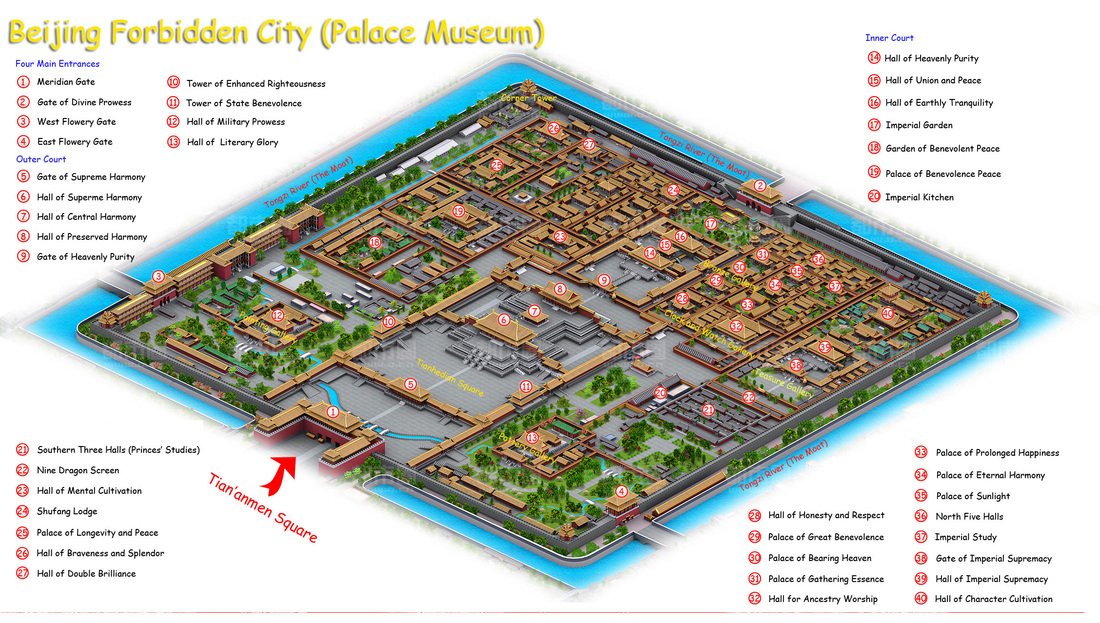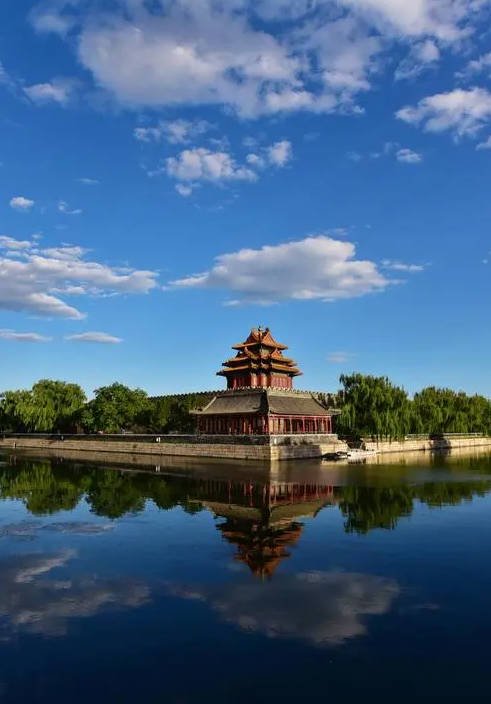How many rooms in the forbidden city?
The Forbidden City in Beijing has 8,707 rooms.

Legend has it that the palaces in the Forbidden City number 9,999 and a half, with the Thirty-Six Heavenly Guardians represented by thirty-six golden vats at the palace gates and the Seventy-Two Earthly Fiends signifying seventy-two drainage channels within the Forbidden City. This gave rise to the legendary claim that there are “9,999 and a half rooms” in the Forbidden City, with the “half” referring to a staircase space beside the Wenyuan Hall behind the Wen Yuan Ge in present times.

However, upon closer analysis, the Forbidden City underwent significant changes between the Ming and Qing dynasties. It expanded during the Ming Dynasty, suffered damage during the late Ming due to warfare, and underwent restoration, expansion, and renovations during the Qing Dynasty. The Wenyuan Fengfengge, seen today, was constructed during the reign of Emperor Qianlong to store the “Complete Library of the Four Treasuries” and did not exist previously.

From a structural perspective, the concept of a “half room” is not valid. There are two criteria for defining a “room”: one is “two rafters make one room,” meaning the space between two parallel roof supports constitutes one room, and the other is the commonly used standard “four pillars make one room,” where the area enclosed by four pillars is considered one room. Regardless of which standard is applied, the so-called “half room” in the case of the Wenyuan Ge is, in fact, a full room.
According to historical records, the Wenyuan Ge has a structure consisting of six rooms, not five and a half. Its design was inspired by the Tianyi Ge in Ningbo, Zhejiang. The Tianyi Ge was built during the Ming Dynasty and served as a private library for Fan Qin, a Ministry of War official during the Jiajing period. When the Wenyuan Ge was first constructed, a pond was excavated in the courtyard with the characters “天一” (Tianyi) hidden within. Due to the realization of the significance of “天一生水” (Tianyi generates water), the pavilion was built with six rooms, signifying the “six transformations of the earth.” The Wenyuan Ge follows the Tianyi Ge’s structure, consisting of six rooms with two corners used for staircases, each just one step wide but still considered a room, not a half room. Thus, the number of rooms in the Wenyuan Ge is unrelated to the legendary count of rooms in the Forbidden City.
In 1972, after archaeological experts conducted an investigation and calculated based on the “four pillars make one room” standard, it was determined that the Forbidden City has a total of 8,707 rooms.